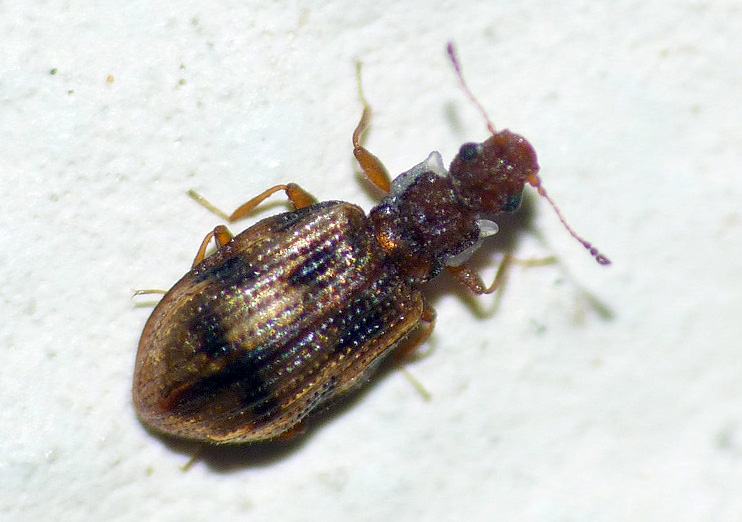Whilst most of you guys have been shivering to death (not Rich of course (unless he's had a snake bite)) it has been pretty OK here this weekend, although still a bit of a chilly wind. So, with the moth trap making its first appearance of the year on Sat night, and an hour wandering around this afternoon, I managed to scrape up to 250 - a quarter done and dusted!
This is the little marsh tucked behind the school that I only discovered at the start of the year. I flushed a Snipe out of it this aft. Notable as only one of two sites where Hard Rush grows on the island I discovered. I don't know what type of willow the little flowering saplings are. Also note the very natural habitat at the back - a whole field of Pampas Grass.
233 - Xanthoria parietina (lichen)
234 - Syntomus foveatus (beetle - see earlier post)
235 - Amaurobius similis (spider)
236 - Agonopterix heracliana (moth)
237 - Caloptilia stigmatella (moth - at window - less than annual at home)
238 - Segestria florentina (spider)
239 - Emmetia marginea (moth - larva mining Bramble)
240 - Phytomyza ilicus (fly - pupa in Holly leaf)
241 - Early Thorn
242 - Double-striped Pug
243 - Early Grey
244 - Acleris hastiana (moth)
245 - Hebrew Character
246 - Yellow Slug
247 - Rabbit
248 - Curled Dock
249 - Male Fern
250 - Phytomyza ranunculi (fly - larvae mining buttercup leaves)
Also have a moth in the fridge which is new to the garden which is probably Acleris ferrugana but I will have to hack at its gonads to be sure. Don't get many garden ticks nowadays. And of course plenty of things I can't identify from numerous craneflies and bluebottles, to bug nymphs and impossible mosses. A few below:
One of those big red velvet mites, but apparently there are a few similar species.
Found this tiny beetle on the wall, less than 2mm long. Didn't think much of it but those transluscent Alexis Carrington shoulder pads tickled me. Googling "tiny beetle UK" brought up a picture that looked just like it - a species of the genus Cartodere. Whether this one is, I wouldn't know.
This massive beast of a cranefly was above the moth trap in the morning but trying to use those keys confused me lots. I declare that I shall ignore craneflies!
There were big patches of this moss on the ground by a dirt track. Very curly "stalks" and beaked "seeds" (I know, I know..). Thought it may be a common species someone may know. I think it should be called "Pubic Moss" but there again I am very immature!
Well apparently tomorrow morning we are getting actual proper blizzards here! I am hoping that this means I'll get a couple of days off to "work at home" ho ho ho...






Rabbit - 247! What have you been playing at?
ReplyDeleteNot seeing rabbits, that's what! Never done even a small fist-pump after seeing a rabbit before.
DeleteBonfire Moss (Funaria hygrometrica) perhaps?
ReplyDeleteThanks, Bonfire Moss seems to match very well and seems to be in the correct habitat.
DeleteYour cranefly is Tipula paludosa or T. oleracea. Look at the separation of the eyes from below to separate these.
ReplyDeleteThanks. Next one I catch I shall have a look at the eyes.
DeleteMark,
ReplyDelete"tiny beetle UK" is actually a very distinctive, if tiny, beetle and you'd hit the right genus: Cartodere bifasciata. It only reached Britain in the 60s I think (from Oz?) but is one of the commonest British beetles now, literally everywhere.
Mark
Mark,
ReplyDelete"tiny beetle UK" is actually a very distinctive, if tiny, beetle and you'd hit the right genus: Cartodere bifasciata. It only reached Britain in the 60s I think (from Oz?) but is one of the commonest British beetles now, literally everywhere.
Mark
That's great. Thanks for the info again. Interesting stuff these beetles eh!
Delete